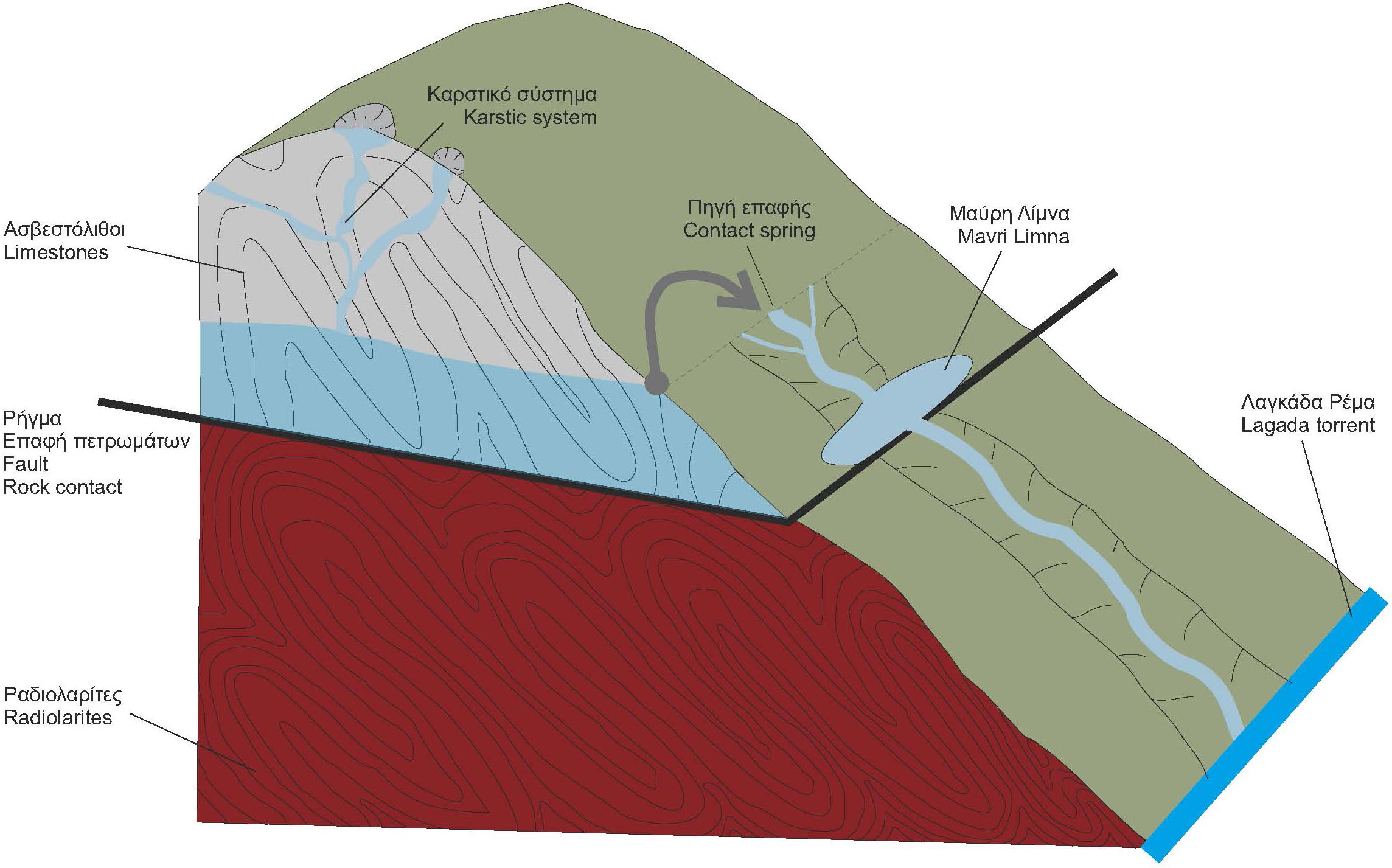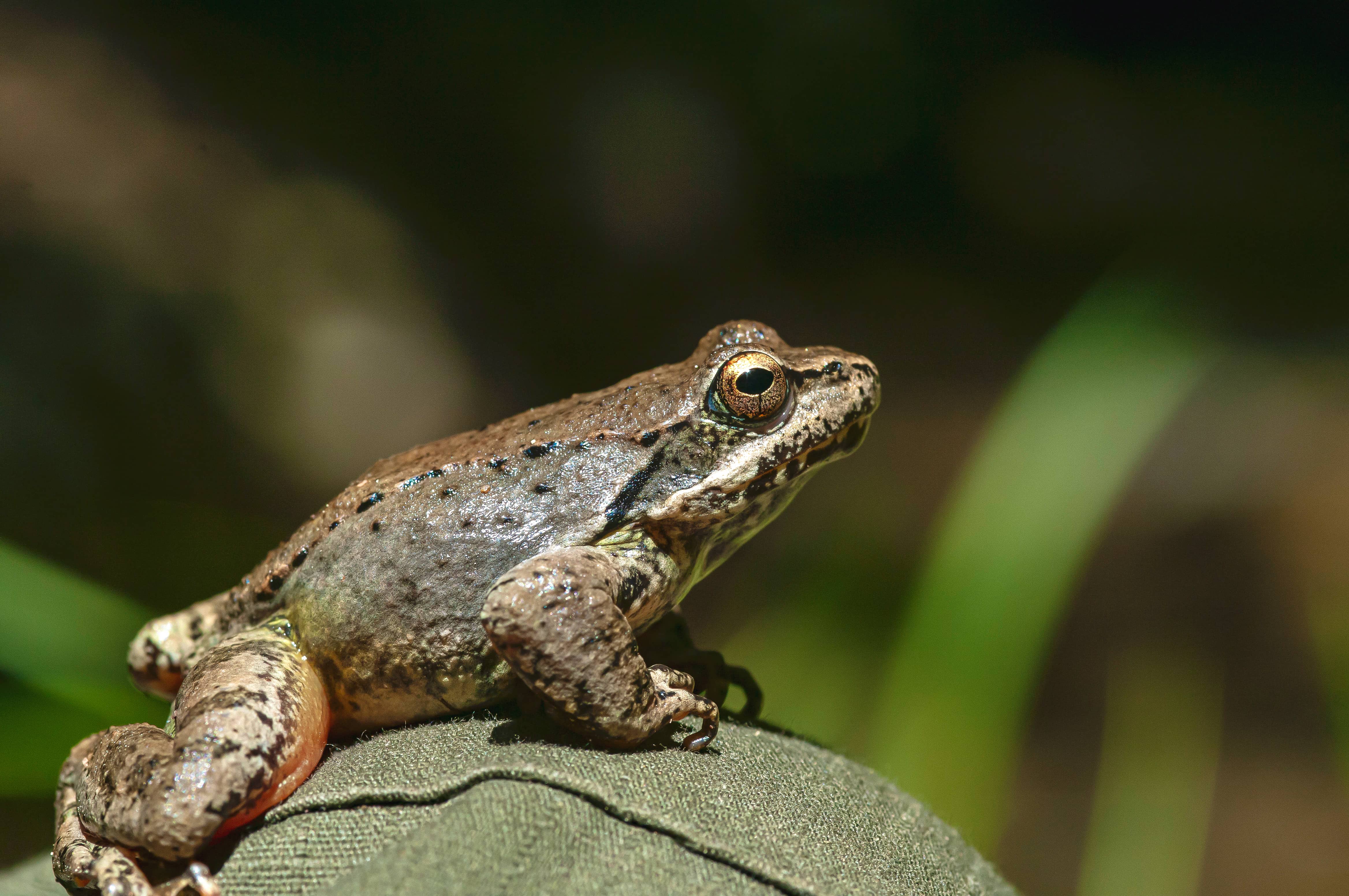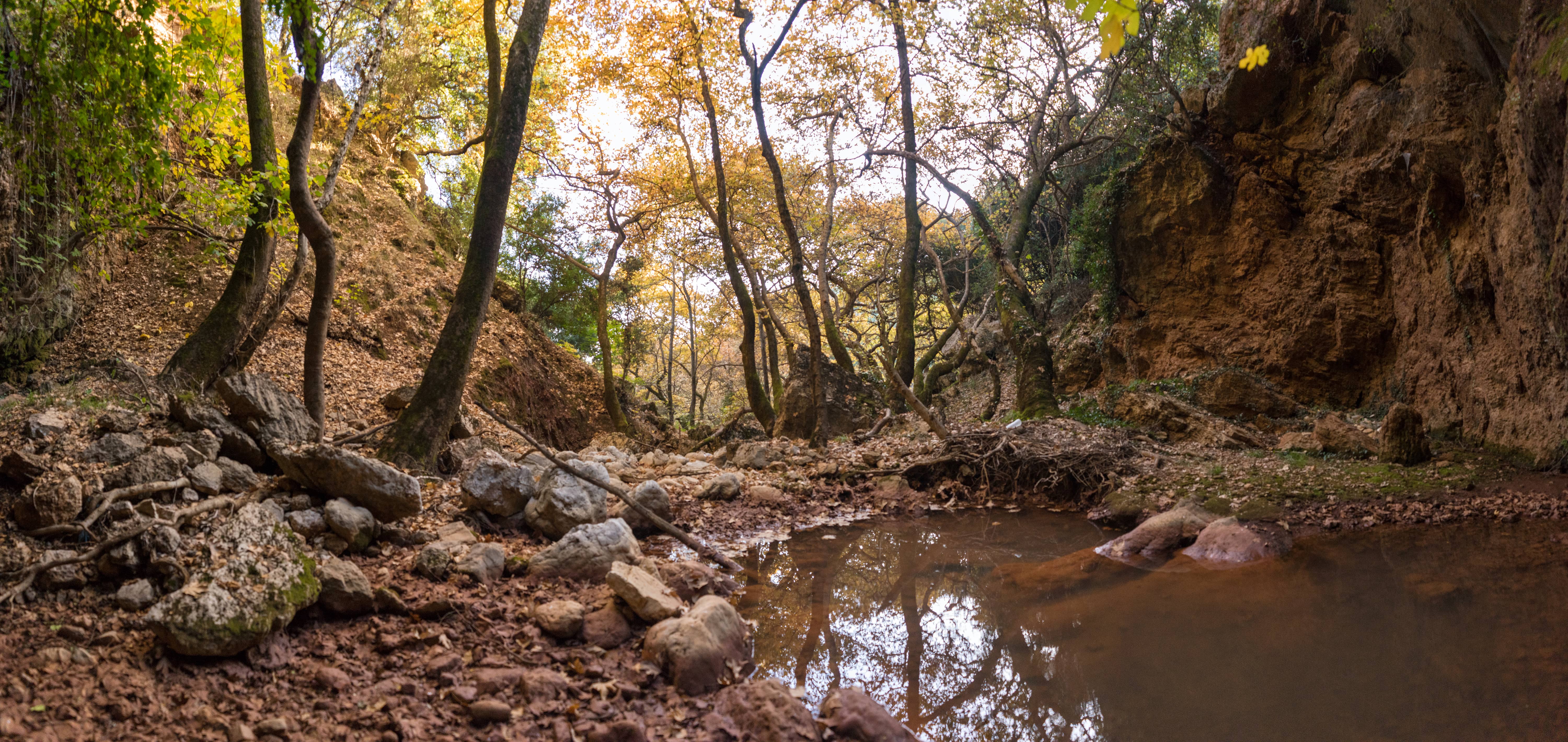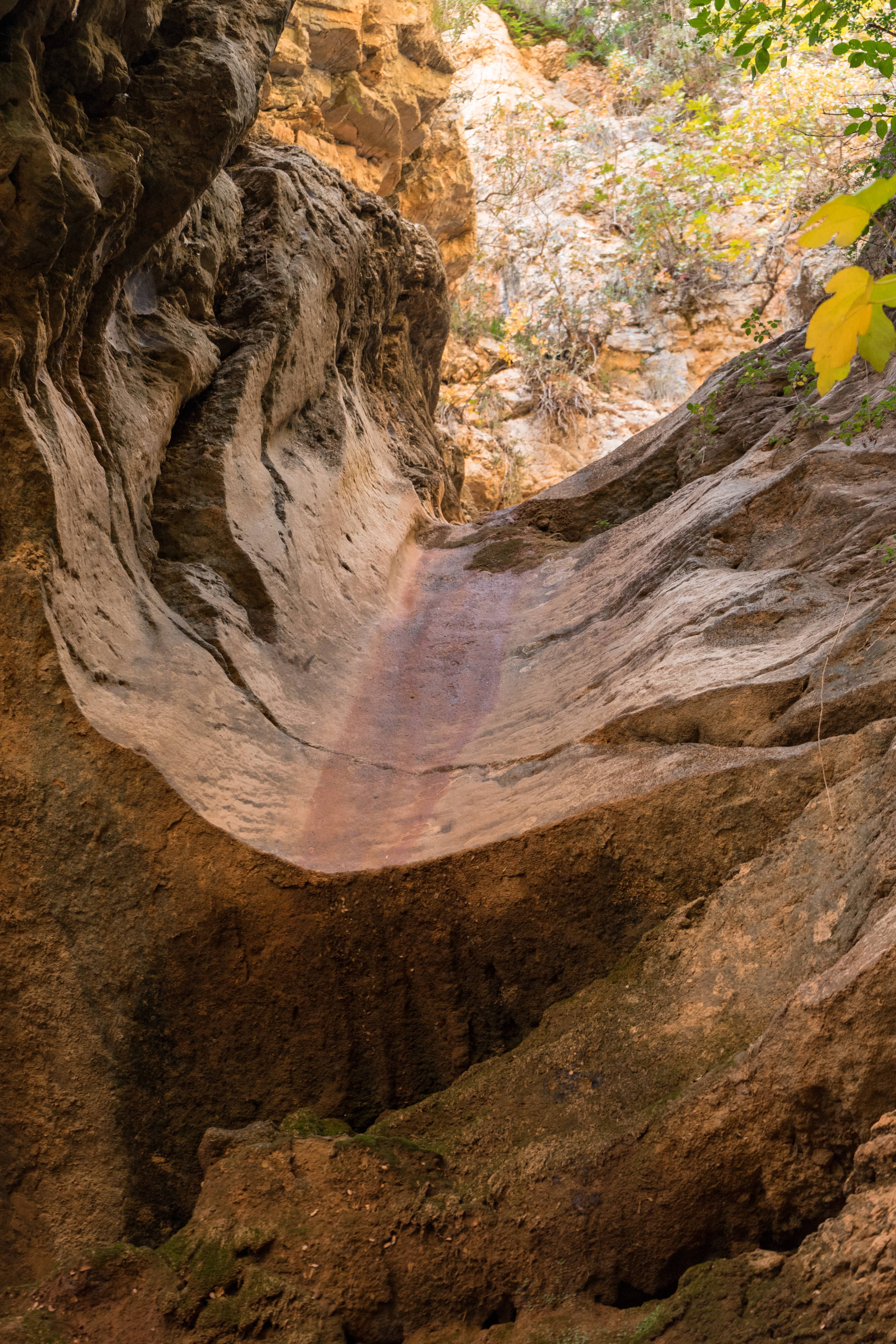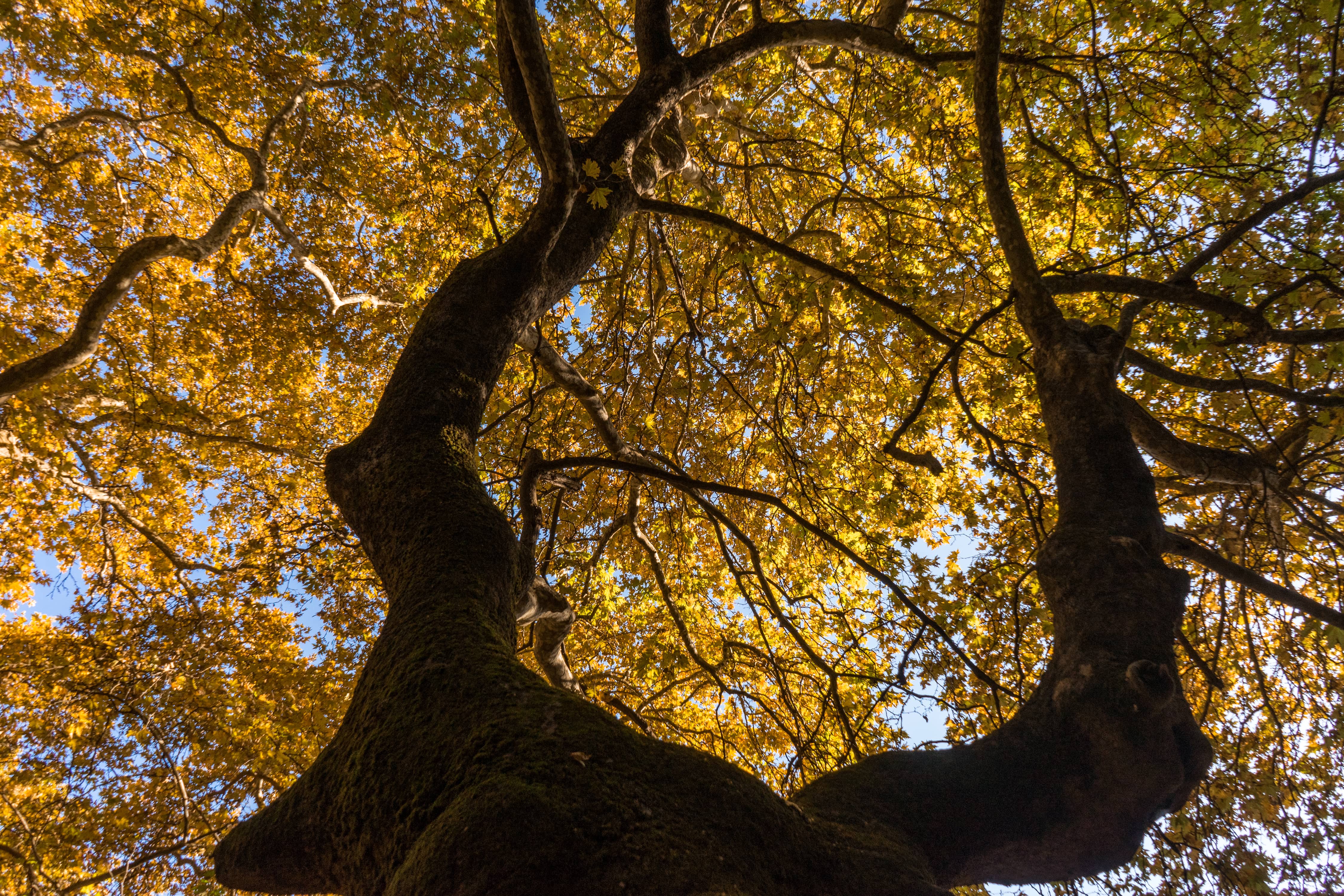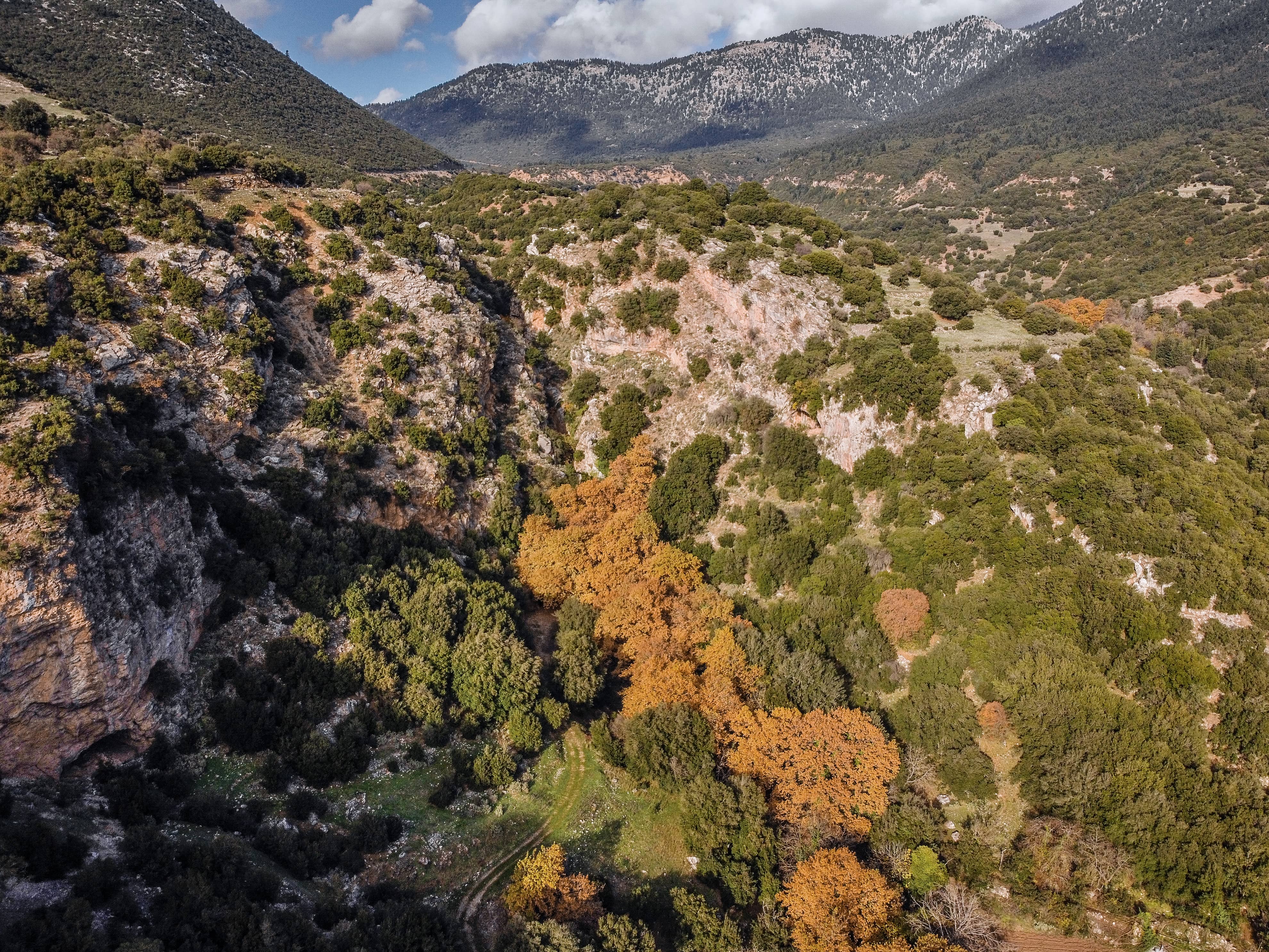THE CASCADING WATERFALLS
Mavri Limna geosite is a contact spring. The water after coming out from the spring flows into a small narrow rocky gorge forming small, terraced waterfalls and a small pool (Mavri Limna). Its name derives from its dark color due to the intense shading caused by the trees (Mavri Limna-Black pool). This spring is said to correlate with the mythical Misampelos spring. According to the myth people who drank water from the spring detested wine and never drank again (Misampelos- Hate vines). This is the reason why this spring was considered therapeutic.
Geodiversity
A contact spring is the spring in which the water moves under the influence of gravity. It is formed at the point where the contact of the overlying water-permeable layer, which in this geosite is platy limestones, meets the underlying impermeable layer, which is radiolarites. Surface water passes through the overlying limestones but not through the underlying radiolarites. As soon as it meets them, it flows at the contact between the two rocks and comes out through holes in the surface. These holes are part of the particularly extensive karstic network of the area. Thus, a water circulation network is created within the limestones of the neighboring mountains. In fact, it has been observed that this spring communicates with the sinkholes of Loussoi plateau.
Biodiversity
The Geosite is located within the Protected Area “SPILAIO KASTRION” (GR2320009) and the Special Protection Zone of the avifauna “MOUNT HELMOS (AROANIA) – VOURAIKOU GORGE AND KALABRYTON AREA” (GR2320013) of the Natura 2000 network. The dominant species of the area are Quercus coccifera and Juniperus oxycedrus. Aromatic and medicinal plants are also recorded, such as sage (Salvia fruticosa).
The avifauna of the area is of great interest and includes birds such as the Golden Eagle (Aquila chrysaetos) and the Eurasian eagle-owl (Bubo bubo). Important species of fauna that live in this area are the Greek stream frog Rana graeca and the Peloponnesian wall lizard (Podarcis peloponnesiaca), an endemic lizard of the Peloponnese, as well as species with a wider distribution, such as the forest dormouse Dryomys nitedula.

